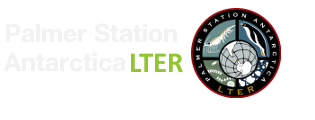
 This site was developed with the support of the National Science Foundation under Grant No. OPP-2224611 and OPP-2026045. Any opinions, findings, and conclusions or recommendations expressed in this material are those of the authors and do not necessarily reflect the views of the National Science Foundation.
This site was developed with the support of the National Science Foundation under Grant No. OPP-2224611 and OPP-2026045. Any opinions, findings, and conclusions or recommendations expressed in this material are those of the authors and do not necessarily reflect the views of the National Science Foundation.
Logistical support for this project in Antarctica was provided by the U.S. National Science Foundation through the U.S. Antarctic Program.
Rutgers University is an equal access/equal opportunity institution. Individuals with disabilities are encouraged to direct suggestions, comments, or complaints concerning any accessibility issues with Rutgers web sites to: accessibility@rutgers.edu or complete the Report Accessibility Barrier or Provide Feedback Form.

2026 Palmer LTER Video Teleconferences
Palmer LTER Teacher Named as New Jersey Hall of Fame Educator of the Year
Zena Cardman prepares for her first spaceflight
PAL Researchers Featured in Rutgers Today for their K-12 Outreach
Scott Doney elected to the National Academy of Sciences
New Paper: Seasonal Variability of Surface Ocean Carbon Uptake and Chlorophyll‐a Concentration
Doney Receives UVA Distinguished Research Award
Seabird Research Featured in Bluedot Living
Palmer Station Live Calls to Classrooms Kickoff for 2025
Palmer penguin data included in a new Global Seabird Research Hub
Carlos Moffat selected as co-chair of SOOS WAPSA
2025 Palmer LTER Video Teleconferences